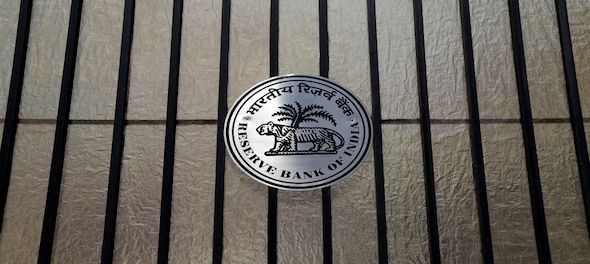
In India, the Monetary Policy Committee has been using the repo rate to control inflation and maintain price stability. In addition, the RBI has also been using money market operations to modulate system liquidity as per overall monetary policy objectives. While the market participants tend to focus on the benchmark rates, it is more important to understand and assess the liquidity management plan of RBI for better treasury decisions.
As per RBI literature, liquidity surplus of more than 1.5 percent of NDTL (Net Demand and Time Liabilities) could be inflationary i.e. one percentage point exogenous increase in liquidity surplus above this threshold value could push up inflation by 60 bps in a year. The inflation impact is statistically significant– potentially having a cumulative impact of as much as 200 bps on inflation over a period of 18-months.
During the Covid period, most central banks employed huge liquidity stimulus as a form of policy accommodation. Between Mar-20 and Sep-21, G4 central banks cumulatively infused a little over USD 10 trillion via asset purchases. In case of India, core money market liquidity surplus increased from its pre pandemic levels of 2.2 percent of NDTL in February 2020 to its peak of 7.7 percent in September 2021.
Also Read: Citizen’s MPC: Tomato inflation may keep RBI MPC a tad hawkish but unchanged on rates and stance
With economy showing signs of stabilisation, the RBI commenced a gradual monetary policy normalisation with core liquidity surplus moderating below the inflationary threshold of 1.5 percent of NDTL by February 2023. Recently, autonomous actions like higher than budgeted dividend transfer to the central government (Rs 87,416 Cr) and withdrawal of Rs 2000 banknote from circulation had pushed core liquidity surplus again towards the inflationary threshold of 1.5 percent of NDTL in late May/early June 2023. Subsequently, the surplus liquidity, however got largely offset on account of bunching up of transient outflows for advance tax payment and monthly GST payment.
Goldilocks scenario
From a monetary policy perspective, the Indian economy currently appears to be in a Goldilocks scenario. Goldilocks refers to a state where an economy is neither too hot nor too cold i.e. a moderate level of economic growth accompanied by stable inflation. Nevertheless, policy challenges will prevail due to downward rigidity of core inflation, upside risks to food inflation due to El Nino and any divergence between domestic and foreign monetary policy that has implications for exchange rate stability.
Therefore, monetary policy always needs to remain nimble footed and cautious. While it is ideal for the RBI to maintain status quo on policy rate in the near term and help nurture the post pandemic growth momentum, it is equally important to emphasise caution via maintenance of non-inflationary liquidity conditions to dissuade market expectations of a premature monetary policy pivot while ensuring complete transmission of monetary policy signal.
We project India’s FY24 BoP (Balance of Payment) at a surplus position of USD 24 billion compared to a deficit of USD 9 billion in FY23. At current exchange rate, this would potentially translate into a core liquidity infusion of Rs 2 trillion during FY24 (out of which, Rs 633 bn has already happened via net FX purchases by RBI). On the durable impact of withdrawal of Rs 2000, we estimate currency in circulation to have cumulatively declined by approximately Rs 1 trillion between week ending May 26th and Jun 23rd. We expect the cumulative net liquidity impact of withdrawal in the range of Rs 1.0-1.3 trillion that will be realised between June-September 2023 in a front-loaded manner.
The question is how will RBI manage the surfeit of liquidity on account of autonomous factors without choking credit disbursal while also upholding its anti-inflation stance? Like manmade dams, RBI can temporarily impound money market liquidity and release it in a calibrated manner to ensure short term money market rates remain hugged to the policy repo rate. This can be achieved by deploying a host of instruments, viz., regular use of VRRR (variable rate reverse repo) auctions, graded sell-buy FX swaps, cash management bills, OMO sale, and a temporary CRR hike. Out of these, VRRR auctions and sell-buy FX swaps appear to be most suitable in the current macroeconomic environment.
From bond investors, the initial euphoria with respect to increase in liquidity on account of higher than budgeted RBI dividend and withdrawal of Rs 2000 banknote from circulation has clearly waned. The creation of liquidity dam to suitably mop up headline money market liquidity will ensure yield curve slopes upward as long-term rates reflect fiscal pressures and a cautious monetary policy stance amidst inflation risks. The firm upward trend in 10-year g-sec yields in the last 2 weeks is an indication in that direction.
—The author, Suman Chowdhury, is Chief Economist and Head of Research at Acuite Ratings and Research. The views expressed are personal.
(Edited by : C H Unnikrishnan)
First Published: Aug 10, 2023 8:29 AM IST
Check out our in-depth Market Coverage, Business News & get real-time Stock Market Updates on CNBC-TV18. Also, Watch our channels CNBC-TV18, CNBC Awaaz and CNBC Bajar Live on-the-go!


Lok Sabha Election 2024: What rural Delhi wants
May 16, 2024 10:10 PM
Over 50 onion farmers detained in Nashik ahead of PM Modi's visit
May 16, 2024 11:14 AM
Why Google CEO is cautiously optimistic about the election year
May 16, 2024 9:51 AM
Mark Mobius reveals how markets will react if NDA wins 400+ Lok Sabha seats
May 15, 2024 8:09 PM

